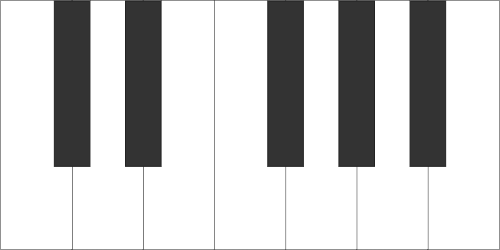A collection of customizable canvas-rendered virtual instruments.

- Installation
- Basic Usage
- Applying Sound
- Instruments - Base Virtual Instrument Class
- Method 1 - Download the latest release here:
- Method 2 - Using npm
npm install virtualsoAdd Virtualso to your HTML page
...
<script src='path/to/Virtualso.js'></script>
...Virtualso is more at home in the browser, but that doesn't mean you can't take it other places
var Virtualso = require('Virtualso');There's not a lot of (read: none) canvas implementations of a virtual instrument library.
There are advantages and disadvantages of doing it this way though.
Advantages:
- Very simple to setup
- No complicated CSS
- Ultimate reusability and even many instances on one page
- No need to pollute the DOM with a bunch of elements
Disadvantages:
- Not as easily customized
- Event handling is a little more complicated
- Animations are a little more difficult
Though Virtualso is great for applications that only require visual aides, Virtualso can also be configured to play sounds. For size and copyright reasons the sounds themselves are not included.
All instruments share at least these fields and methods. Viano, VString, and VDrumPad all 'inherit' from the Instrument class.
var options = {
/*
* The not scheme to be used with the instrument
*/
scheme : Virtualso.defaultScheme // ["C", "C#", "D" ...]
/*
* Width of view generated
*/
width : 400,
/*
* Height of view generated
*/
height : 200,
/*
* Instrument's rotation in radians
* Setting this rotation DOES NOT rotate the view itself, but the elements within it.
* Make sure the view is big enough to contain the rotated div
* To rotate the view itself use CSS or
*/
rotation : 0,
/*
* The Canvas in which the instrument is drawn on
* If none is specified then one will be created
*/
view: HTMLCanvasElement
/*
* The top-left-width-height values of the instrument
* These do not modify the size of the view
*/
top : 0,
left : 0,
width : 500,
height : 200
};
var instrument = new Virtualso.Instrument( options );
// methods
instrument.addEventListener(String, Function);Methods
A Virtual Piano.
var options = {
/*
* Specify the key range of the virtual keyboard
*
* Possible values:
* ["C", 12] (default) - Start at C0 and generate 12 keys
* ["C", "A"] - Start at C0 and generate to A0
* ["A0", "C8"] - Start at A0 and Generate to C8 (standard 88 key piano)
* ["A0", 88] - Start at A0 and generate 88 keys
*/
range : ["C", 12],
/*
* Choose when to display the name of the note on the key
* Possible values:
* true - Always display noteName
* false - Never display noteName
* "triggered" - Display only on triggered notes
* "untriggered" - Display only on untriggered notes (why? I dunno, I just offer solutions okay)
* [...'notes'] - String of specific notes to
*/
noteNames : false,
/*
* Turn keyboard control of Viano on/off
* consider using the toggleInteraction method if you're using multiple Viano instances and
* are experiencing a problem with the Viano playing on all of them
*/
keyboardControl : true,
/*
* Map keys on keyboard to keys on Viano
* Maps on the range [C3, C5]
*/
keyMap : Instrument.defaultKeymap
};
// Create a new Viano
var piano = new Virtualso.Viano( options );
// Add the Viano's canvas to the DOM
document.body.appendChild(piano.view); VString represents an arbitrarily stringed instrument. Each string vibrates at a particular frequency when clicked.
The Virtual DrumPad class